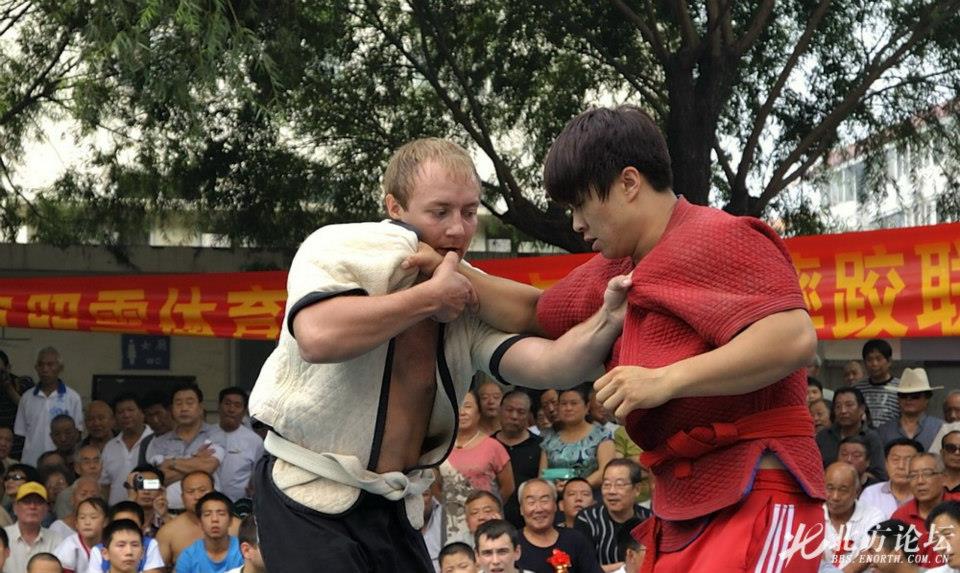While I won’t pretend to know what Sumerians did thousands of years ago, it’s interesting to note that of all the various Kung Fu systems developed, we only know of one that dealt with fighting on the ground, and it was named for dogs.
To be fair to the Chinese, the Japanese didn’t seem too keen on ground fighting either, despite Bjj having roots in a Japanese MA. It appears that the only reason Kano had newaza in Kodokan Judo was because a ground fighting master bested some of his best Judoka. Kano himself also seemed to have an aversion to ground grappling, greatly preferring the throwing aspect.
With that said, I’ll just say that the only reason you’re seeing ground fighting gain so much prevalence in modern martial arts is because its effectiveness. That makes its exclusion from Sanda very puzzling, but I do understand that the Chinese want their variety of kickboxing to have its own unique flavor.
I didn't mean to seem rude so I apologize for my tone if it was a bit aggressive.
This is a complex discussion actually and a bit off topic, but there are actually quite a lot of different styles and methodologies in Chinese martial arts and wushu that include ground technique, Dog boxing being just one facet. For the most part they are no longer extant, but digging deep enough you can find references to them (if not nice, easy to reference pictures). Sadly, a lot of this was just lost in the Cultural Revolution (see Shaolin Chin Na Fa: Art of Seizing and Grappling. Instructor's Manual for Police Academy of Zhejiang Province (Shanghai, 1936) for interested grappling positions based on common arrest techniques (knee on belly etc)).
China (Han as well as Manchuria and Mongolia) have wrestling traditions that are several thousand years old, so the odds of never having developed techniques for both ground grappling and recovery are basically nil. The reasons for the decline of ground fighting in both China and Japan have a couple of common drivers: the development of firearms (which happened in China first and then Japan) heavily depressed focus on ground fighting.
Not to mention Chinese-Japanese racism. As Jujutsu and Judo evolved in Japan, there was a clear focus on ensuring Chinese arts didn't look anything like Japanese arts, and Okinawan and Japanese arts flatly changed their names to disassociate from China. Even though you can link Jujutsu to Chinese arts if you go back far enough, because most Japanese warfare developed in lockstep with Chinese warfare.
Ultimately, the reason there is no "ground game" in Sanda is because modern Sanda is a point based sport developed from much older arts (Jiao Li, Shuai Jiao) that focused more on essential elements of fighting such as getting back on your feet. But anybody who's trained against someone proficient in grappling kung fu (Tiger, Dragon, Liuhebafa, Do) knows these people can fight just fine on the ground.
I've nothing against BJJ at all but I just find the idea that hand to hand grappling reached its peak as late as the 20th century is probably just an illusion. We see Brazil and Japan as the biggest source of these now, because we've been living through the time, and they just happen to be very popular and associated with these countries. Yet ancient history shows every major civilization (Egypt, Rome, China) fully developed boxing and grappling arts a long time ago. What's likely is that much of the ground grappling in various styles is now lost, because they were not emphasized. You can see the same thing with weapons work...some styles contain dozens and dozens of weapon sets, but good luck finding anyone alive who knows them all (not too useful a skill in 2020, really, but then again, ground fighting is only marginally more useful).


